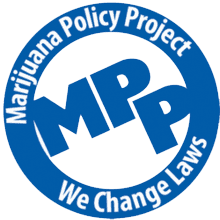Cannabinoid Report: THC 101
August 6, 2019Many people can tell you that they’ve at least heard of THC, but most would struggle to thoroughly describe it. Indeed, THC is famous for a good reason: it is cannabis’s primary psychoactive component and was the first cannabinoid to be discovered by modern scientists (in 1964 by Dr. Raphael Mechoulam at the Weizmann Institute of Science in Israel.) Tetrahydrocannabinol (THC), whose chemical name is trans-Δ⁹-tetrahydrocannabinol, is one of hundreds of cannabinoids identified in cannabis.
WHAT DOES THC DO?
THC is responsible for the myriad physical effects of cannabis consumption: relaxation, euphoria, altered thoughts, increased heart rate, and short-term memory loss, to name a few. Note that the effects of THC vary from person to person – while many find the high to be pleasurable, it is not uncommon for others to feel a sense of anxiety or discomfort. On average, the effects of THC last for 1-3 hours, but the duration can also largely depend on mode of consumption.
THC MYTHS
Due to politicization and prohibitionist discourse, especially in the United States, plenty of myths surrounding THC have accumulated over the years.
Perhaps the most prominent myth is one that most people were taught at an early age: that cannabis is a “gateway drug”, meaning that consuming THC will inevitably lead to the consumption of harder drugs. There is no hard evidence to support this idea. On the contrary, there is substantial evidence to suggest that using cannabis can actually prevent more serious drug use – in particular, opioids.
On the other end of the spectrum, there are many cannabis advocates who purport the plant to be virtually harmless. Indeed, THC and cannabis are widely considered to be significantly less harmful than other drugs, but, as outlined in the “Risks” section, it would be untrue to classify it as perfectly harmless.
THC MEDICAL BENEFITS
THC is listed as a Schedule II drug under the 1991 UN Convention on Psychotropic Substances, though, in the United States, it is still listed as a Schedule I drug under the Controlled Substances Act. Because of THC’s unlawful status, researchers and scientists have been severely restricted in their permissions to research the cannabinoid (though these restrictions are loosening up in many countries.) THC can be effective in reducing nausea, increasing appetite, relieving pain, and reducing inflammation. These effects can make for effective treatments for conditions like cancer, anorexia, chronic pain, IBS, and more (however, THC is not necessarily guaranteed to be effective for all patients with these types of conditions.)
THC SIDE EFFECTS
Again, because of legal restrictions, the available research on the benefits and risks of THC is limited. As mentioned, consuming THC is not a positive experience for everybody – it is during a negative high that one may experience the short-term risks of THC: heightened anxiety, impaired motor skills, short-term memory loss, and general discomfort. The long-term adverse effects are much more serious and are typically a result of regular adolescent consumption. Heavy THC usage as an adolescent can retard brain development, which may lead to things like poor academic performance, or eventually decreased IQ and dependence/addiction. Adolescent THC usage can also cause psychotic disorders, such as schizophrenia. More comprehensive research is being done on both the benefits and risks of THC.







